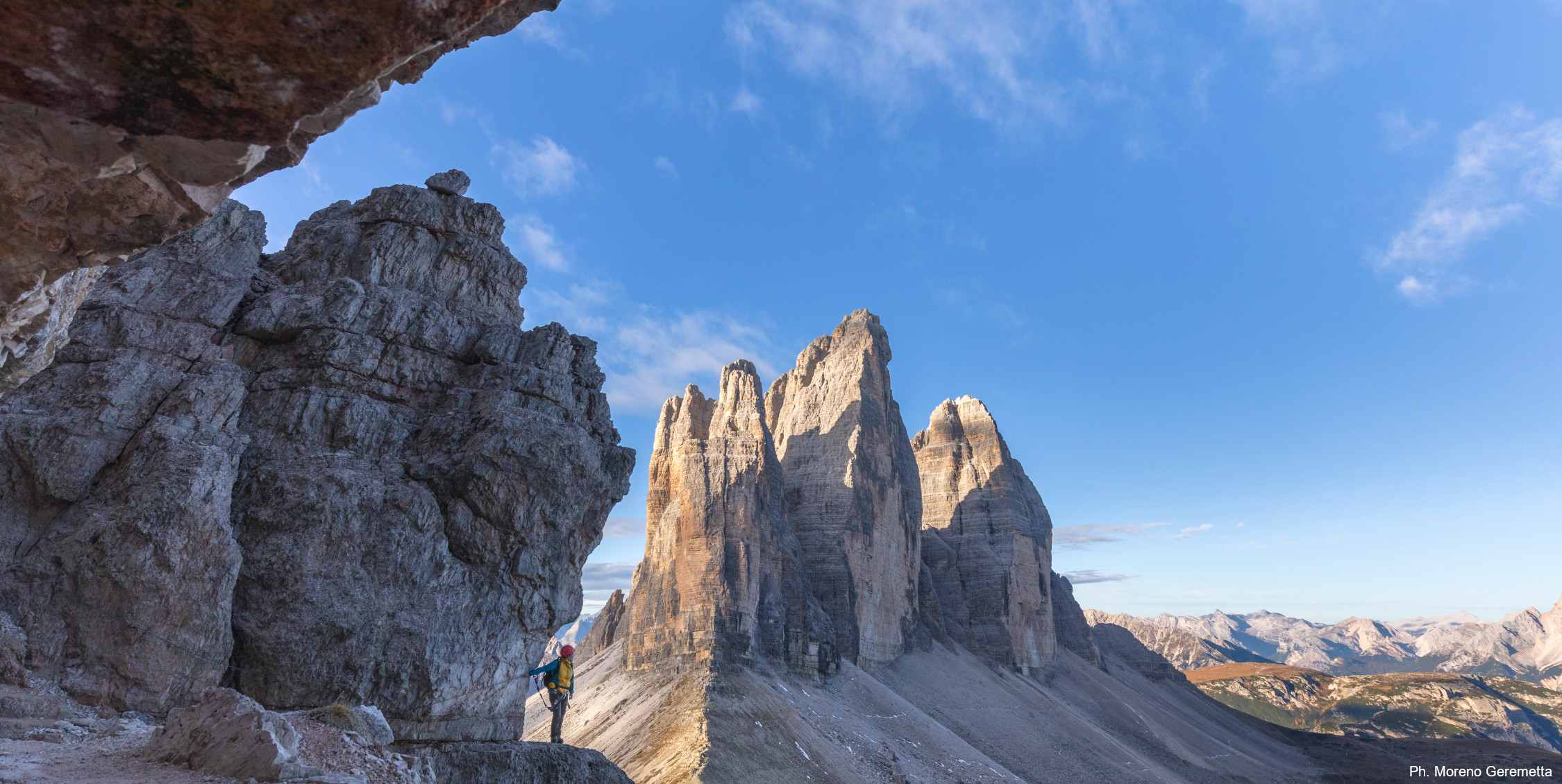Northern Dolomites
The most extensive of the UNESCO Dolomite Systems, it covers an area of 53,586 hectares in the provinces of Belluno and Bolzano. Its boundaries are the Pusteria, Sesto and Badia valleys, Valle di San Cassiano and the Boite and Piave valleys and it consists of four main areas: the Sesto-Cadini Dolomites, the Fanes-Senes-Braies chains with the Tofane and Cristallo peaks and the Cadore Dolomites.
The Sesto-Cadini Dolomites are in the far north-eastern part of the Dolomites, featuring spectacular peaks looming more than 2,000 metres above the huge rocky high plateaux. As well as the triple peaks of Tre Cime di Lavaredo, undoubtedly one of the most well-known and iconic chains, the System is also home to mounts Croda Rossa, Punta Tre Scarperi, Croda dei Toni and Cadini di Misurina. Val d’Ansiei separates the Sesto-Cadini Dolomites from the Monte Cristallo chain. Valle di Landro separates the Sesto-Cadini Dolomites from the Fanes-Senes-Braies chain and the Tofane peaks, an area occupying the north-western and central part of the Northern Dolomites System. Peaks in this area include Lagazuoi ridge the Tofane peaks and the Conturines chain.
The Cadore Dolomites to the south-east are dominated by mounts Sorapis, Marmarole and Antelao which, at 3,264 m, is the second highest peak in the Dolomites after Marmolada.
The Northern Dolomites System has an extraordinarily rich heritage in terms of its landscape, natural history and geology. For this reason, and given the extensive size of the area, three protected areas have been created to be preserved and promoted: the Dolomiti d’Ampezzo Natural Park, the Tre Cime Natural Park and the Fanes-Senes-Braies Natural Park.
Geology
Explore
Google Street View




